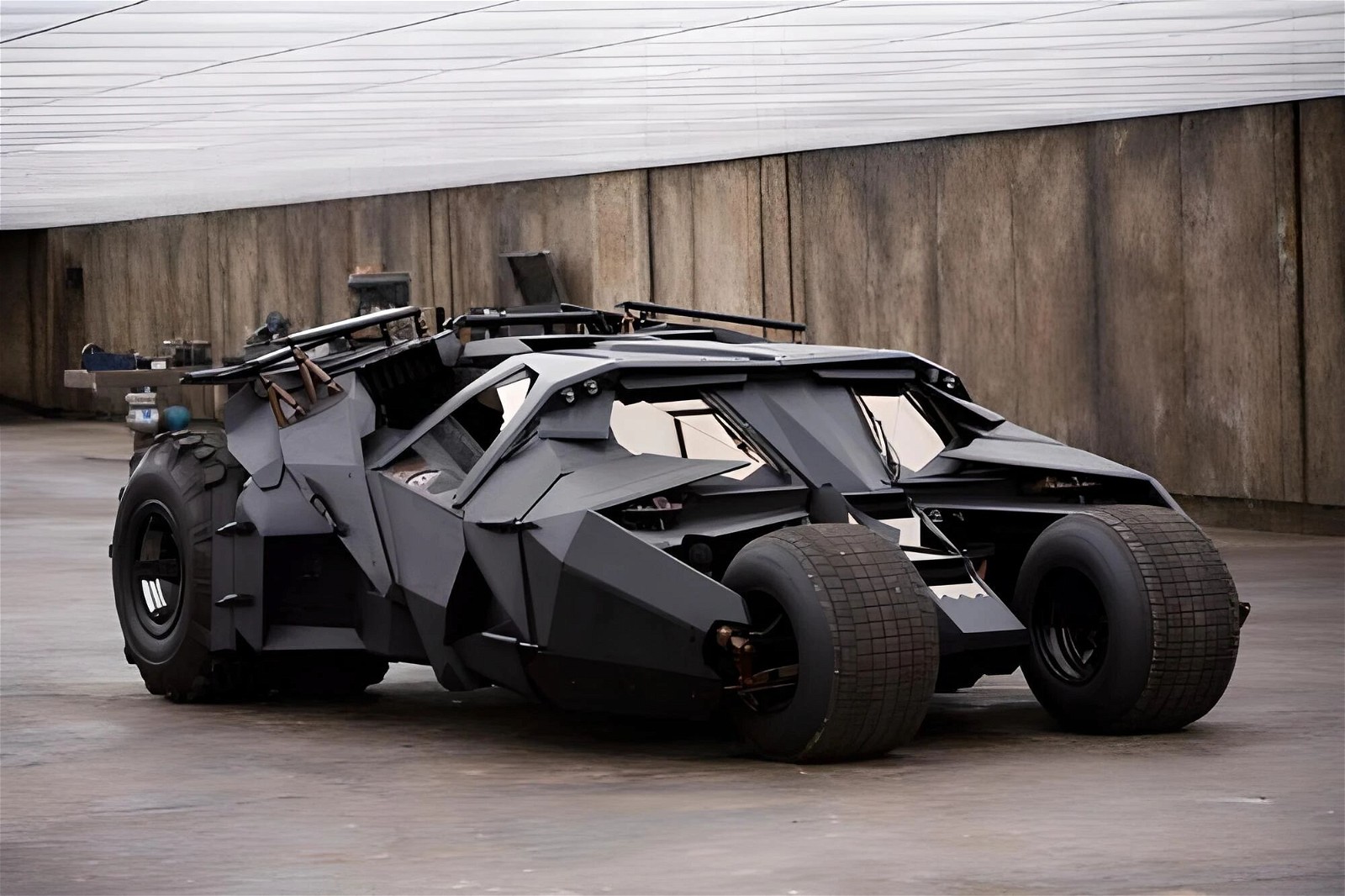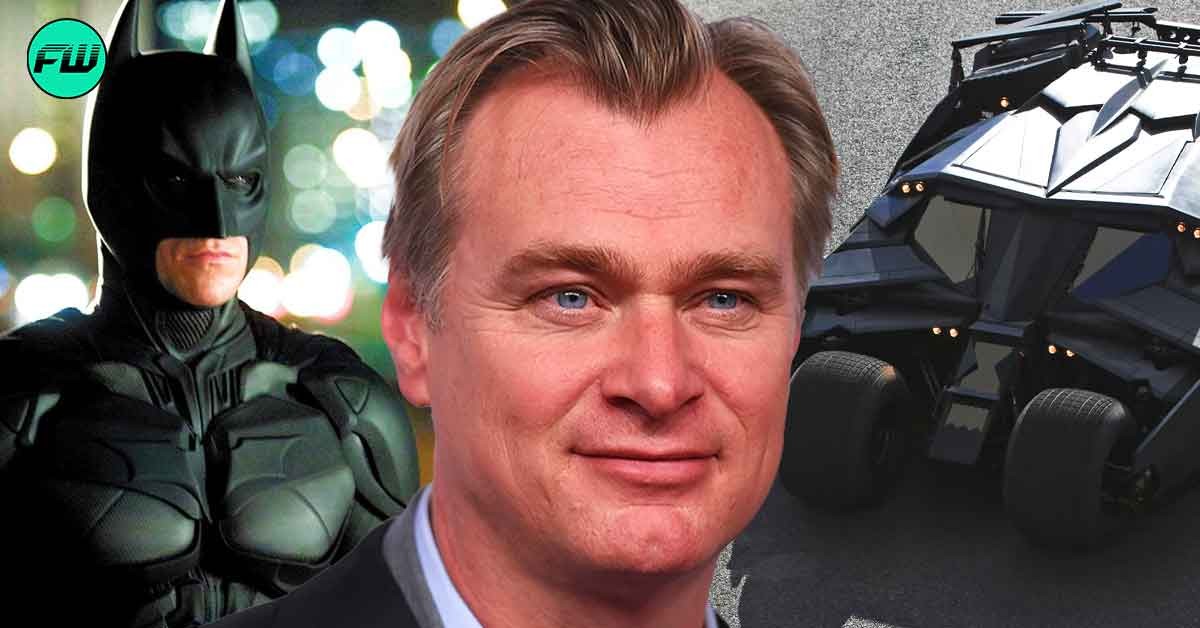Christopher Nolan’s Dark Knight trilogy was a success for one too many reasons. From its perfect understanding of the comic book lore that takes Bruce Wayne, destroys his psyche, and leaves him flying around Gotham as the Caped Crusader to the realistic portrayal of the Narrows (inspired by the ancient slums of the Walled City of Kowloon) – so much of Batman Begins and its subsequent sequels contributed in revolutionizing the perception of comic book movies in the 21st century.
However, the factor that truly impressed critics and the comic-informed fans in the crowd was Nolan’s authority over every element of the plot and the way he preferred using practical effects to make the story more grounded in reality rather than fantastical fiction reserved for one’s imagination.

Also read: Why the New Batmobile is Way Better Than Dark Knight’s Tumbler
Christopher Nolan Engineers a Perfectly Designed Batmobile
Every version of the Batmobile to date has had something new and essential added to its design to fit it more with the elemental tone and nature of the film it operates in. But Christopher Nolan‘s Batman was not simply one man hiding behind a mask – the Dark Knight trilogy was a layered narrative that forever altered the grim identity of Batman and made him a superhero that is truly believable to the untrained mind. As such, Christopher Nolan’s trilogy also demands a Batmobile that can operate within this atmosphere of impervious doom, dark grit, and the thick air of grief and realism that shrouds the hero at its center.

To build the Batmobile, parts from separate models of vehicles and aircraft were combined to make it as adaptable, functional, and durable as it would have to be in reality. Production designer Nathan Crowley used the nose cone from a model version of the Lockheed P-38 Lightning, a twin piston-engined American fighter jet used during World War II to form the turbine’s chassis for the Batmobile. Once the engine was established, the rest of the Batmobile was molded and carved out of steel using a styrofoam model as the test frame.
The finalized version of the Batmobile comprised a 5.7 liter Chevy V8 engine, a truck axle for the rear axle, the front tires taken from dirt racing tires used on open-wheel sprint cars, and a suspension system used by the Baja racing trucks fitted to make the Batmobile more essential. The vehicle could go from 0 to 60 mph in 5 seconds, had a speed of over 100 mph, could make drastic, sharp turns around street corners, and withstand a propelled jump of almost 30 feet which was demonstrated in the film during the waterfall entry scene.
Critical Response To Christopher Nolan’s Dark Knight Trilogy
The unanimous vote declared that Batman Begins and its subsequent sequels, which each went on to fetch over a billion dollars at the box office, were the best Batman movies ever made (even surpassing Batman ’89). The magnitude of realism that the film portrayed was captured best in words by The Wall Street Journal critic Kyle Smith who said:
“Batman starts stripping away each layer of Gotham crime only to discover a sicker and more monstrous evil beneath, his rancid city simultaneously invokes early ’90s New York, when criminals frolicked to the tune of five murders a day; Serpico New York, when cops were for sale; and today, when psychos seek to kill us all at once rather than one by one.”
However, a more detailed analysis of the critical reviews from June 2005 shows how influential the movie truly was for the audience of the time and the future of cinema.

Also read: Despite Being Batman, Christopher Nolan Had Bizarrely Strict Rule for Christian Bale in $373M Movie
Tim Burton, director of Batman ’89 himself claimed that Batman Begins: “captured the real spirit that these kinds of movies are supposed to have nowadays… Nolan certainly got more to the root of what the Batman comics are about.”
The Chicago Tribune claimed Christopher Nolan managed to take the movie out of the “slam-bang Hollywood jokefests” that CBM films had become while Pulitzer Prize-winning critic, Roger Ebert wrote, “the Batman movie I’ve been waiting for; more correctly, this is the movie I did not realize I was waiting for.” Ebert also specifically pointed out the realistic portrayals of the film’s gadgetry and locations and the well-developed “story and character” – elements that Christopher Nolan paid great attention to while charting out the blueprints of his trilogy.
Source: How Stuff Works

